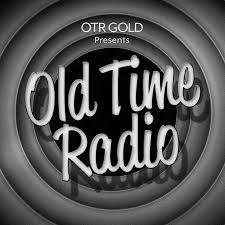Jeff: The last two weeks here in Wavescan, Ray Robinson has presented the history of radio broadcasting in the North African country of Libya. But, there’s one more aspect to broadcasting in Libya that we haven’t covered yet, that’s hinted at by the country entry for Libya in the 1978 edition of the WRTH, which lists two shortwave transmitters on the radio ship Mebo II. There’s a bizarre story behind that entry, which deserves digging into. So, here once again is Ray to explain what happened.
Ray: Thanks, Jeff. Probably the most successful of the 1970’s offshore stations was Radio Northsea International, which broadcast from off the coast of Holland from early 1970 until the Dutch anti-offshore radio law went into effect on 31st August 1974. The station operated from a ship called the ‘Mebo II’, owned by Mebo Telecommunications Ltd., based in Zurich, Switzerland. The men behind the company were two Swiss engineers, Erwin Meister and Edwin Bollier, and using the first two letters of each of their last names, they formed the acronym ‘Mebo’. They purchased two Norwegian ships in 1969. The first was the Bjarkoy, which they re-registered as the Mebo, but when they realized it was too small to use as a broadcasting base, they bought a second vessel, the coaster Silvretta, which had been built in 1952. This they re-registered as the Mebo II, and the smaller Mebo they retained as a tender for the Mebo II while it was anchored at sea.
After the station’s broadcast life in the North Sea came to an end, there was much speculation and legal wrangling as to what would happen to the ships next. That in itself is a long story, but eventually the ships left Dutch waters on 16th January 1977. During this period, the smaller ship, the Mebo, had been re-registered as the Angela.
The Mebo II had its original full complement of broadcast equipment on board:
• two fully equipped studios,
• a 100 kW RCA medium wave transmitter,
• 2 x 10 kW shortwave transmitters,
• a 1.2 kW mono FM transmitter, and
• a 140’ antenna mast.
It also had another medium wave transmitter, a 10 kW Continental Electronics unit, that had been transferred from the Radio Veronica ship, the MV Norderney.
The ships had Dutch captains, and crews from the Cape Verde Islands, but with them also went former Caroline and RNI transmitter engineer and DJ, Robin Adcroft (who also used the name Robin Banks on air).
Their departure was shrouded in mystery as they sailed south towards a new destination and a new role in the Mediterranean which was to be unlike anything ever experienced by an offshore radio station before or since. On 1st February they called at Ceuta – the Spanish enclave in Morocco – to take on fresh supplies of food, fuel and water. They then eventually arrived off the port of Tripoli on 9th February, and five days later, dropped anchor side-by-side in the harbor, 150 meters out. The crew were all paid off, and only radio engineer Robin Adcroft remained on board. The ships had apparently been leased to the government of Libya.
During February and March 1977, a number of non-stop music test transmissions were made by Robin from Tripoli Harbor. These transmissions, on 1232 kHz (244m) using a power of about 40 kW, took place generally between 8 and 11pm local time (1800-2100 UTC) and consisted of records and announcements, but without any station identifications. Later some tests were also made on 773 kHz (388m) using the old Radio Veronica 10 kW transmitter which had been installed on the Mebo II.
These test transmissions had to be halted after a few weeks because it was discovered that they were causing interference to local communications facilities in the Tripoli area. A further widely-heard series of tests from the Mebo II began on 2nd May 1977 on 773 kHz medium wave, 6210 kHz shortwave, and 90 MHz FM. Again the tests were presented by Robin Adcroft and consisted largely of music and announcements, but this time knowing that some European offshore radio enthusiasts would probably be listening on shortwave, the occasional RNI jingle was inserted between records. At the top and bottom of each hour, the former RNI theme, "Man of Action" was also played.
On 19th May 1977 test transmissions also started in the 31m shortwave band on 9810 kHz, making a total of four transmitters broadcasting simultaneously from the Mebo II - the first time that had happened in over three years.
< Audio Clip – Mebo II test, Mon 23 May 1977 >
Unfortunately because of interference from the Russian Home Service on the same 31 meter band frequency, use of 9810 kHz had to be dropped in June, and the 49 meter band transmitter was switched from 6210 to 6205 kHz.
On 29th June 1977 an afternoon relay began on 773 kHz, 6205 kHz and 90 MHz of the English language programs of the Socialist People's Libyan Arab Jamahiriya Broadcasting Corporation (SPLAJBC), itself transmitting from Tripoli on 1406 kHz (214m). These relays, heard from 1600-1740 UTC, had been arranged by Robin Adcroft on instructions from Mebo Director Edwin Bollier in Switzerland, and were thought to have been for the benefit of Libyan Embassies throughout the world. However, no feedback was received from this potential audience and the relays ended on 16th July, although the evening music programs continued.
On 8th August both the Mebo II and the Angela raised their anchors and sailed east from Tripoli Harbor calling first at Benghazi three days later, and then on to Derna Harbor – some 600 miles from Tripoli and about as close to the Egyptian border as they could get. Relations between Libya and Egypt had become strained and the main reason for the move was to jam Egyptian Radio’s transmissions on 773 kHz. This was effective in the local area, but not much further afield as Egypt used 1000 kW on 773 kHz.
The Mebo II’s transmissions on 773 kHz were made using the 10 kW former Radio Veronica transmitter, and they were identified with the call sign ‘LBJ’, meaning Libyan Post-Revolution Broadcasting. The main 100 kW transmitter on the Mebo II was ready to be used, but at the last moment the Libyan authorities, perhaps wary of escalating the tension with Egypt still further, instructed the radio engineers not to retune the transmitter or turn it on.
At this stage programs consisted of music, with no propaganda or information, and continued for about five hours each night, half of that time being live programs presented by Robin Adcroft and the remainder pre-recorded taped programs. The Mebo II left Derna on 30th October 1977 for a new anchorage off Benghazi.
After arriving off Benghazi test transmissions were resumed on all three wavebands, but after two days engineers were instructed to turn off the medium wave and shortwave outlets, leaving only FM to carry the five hours of nightly programs. The engineers were told to keep the transmitters silent until arrangements had been made for Libyan frequencies to be allocated to them.
Despite this instruction a number of relays of the FM test transmissions were broadcast on 6205 kHz shortwave in December 1977 and early January 1978. They were announced simply as "a program of international music on 90 MHz FM."
Interestingly, the station is listed in the 1978 WRTH, showing the frequencies of 773 kHz medium wave, 6205 and 9810 kHz shortwave, and 90 MHz FM. Apparently at that time, it was the only FM transmitter in the country.
On 15th January 1978 the, by now regular, program didn’t start as usual at 7.00pm local time and an announcement broadcast later in the evening indicated that the Mebo II was actually sailing away from Benghazi harbor. The radio ship eventually arrived off Tripoli once again on 19th January and broadcasts, consisting of a relay of the SPLAJBC in English, were made until 8.30pm local time. These programs were mainly news bulletins, music, and talks about international affairs.
In February 1978, the Mebo II and the Angela both went into dry dock in Tripoli. Some damage on the Angela was repaired, and both ships were repainted, the Mebo II in red with cream flashes, and the Angela in blue, white and black. Whilst in dry dock both vessels were manned by between six and twelve armed guards at all times. Coming out of dry dock, the vessels initially tied up against the quay opposite the British Embassy in Tripoli.
Broadcasts resumed on 12th March on medium wave and shortwave only, and on 27th March, the 10 kW medium wave transmitter was retuned to 1610 kHz (186 m). Reception reports were requested to Mebo’s address in Zurich.
< Audio Clip - Mebo II test, Mon 27 Mar 1978 >
On 5th April 1978 the Mebo II and the Angela became the official property of the Libyan Government and were re-named Al Fateh and Almasira respectively.
A foreign language service of the SPLAJBC started from Al Fateh on 11th June 1978. Each day six Arab announcers, three French speaking and three English speaking, travelled out to the ship in Tripoli Harbor to present live programs. The announcers relied on radio engineers Robin Adcroft and Printz Holman to operate the technical equipment for them, and they were the only two Europeans allowed on board the radio ship. Foreign announcers hired to broadcast on the European Service of SPLAJBC were required to pre-record their programs in landbased studios.
This broadcasting arrangement lasted only until the end of the month, when plans were announced for a new daily service, consisting of readings from the Holy Koran, to be broadcast using the 10 kW medium wave transmitter on 1610 kHz, and also on 6206 kHz shortwave, between 0600 and 1800 UTC.
On 14th August 1978 Robin Adcroft and Printz Holman decided to make a clandestine broadcast on shortwave to commemorate the 11th anniversary of the British Marine Offences Act in 1967. This transmission took place between 0500 and 0600 UTC, before the broadcasts of Holy Koran readings started, and was the last English language program made from the former ’Mebo II’.
By September 1978, all the European radio staff had left Al Fateh, and the ship was fully under the control of the Libyan technicians. In November 1978, they adjusted the medium wave frequency from 1610 to 1611 kHz, in line with the new 9 kHz channel spacing plan.
Al Fateh was dry docked again in Valetta, Malta during June 1979, where she was once more repainted, this time in the Libyan national color, green, and with the name Al Fateh now on her bow. She returned to Libya in the first week of September 1979, and recommenced transmissions of SPLAJBC shortly afterwards. Shortwave programming was logged on 7165 kHz in the 41 meter band, with the 1980 WRTH listing transmissions on 1611 and 7165 kHz.
Al Fateh continued to be used to relay Holy Koran readings from the SPLAJBC until mid-1980, with the last logging by international radio monitors being on July 20th (1980). The ships were expensive to maintain, and with new transmitting stations then available on land, the ships were no longer needed. Robin Adcroft said he went back to Libya in the second half of 1980 to supervise the de-commissioning of equipment from Al Fateh in Tripoli harbor. It was put in storage with the intention of later installation on land, although it is believed that never happened. Finally, both ships were unceremoniously towed into the Mediterranean and sunk as the result of being used as target practice by the Libyan Air Force.
Back to you, Jeff.
(AWR)






















